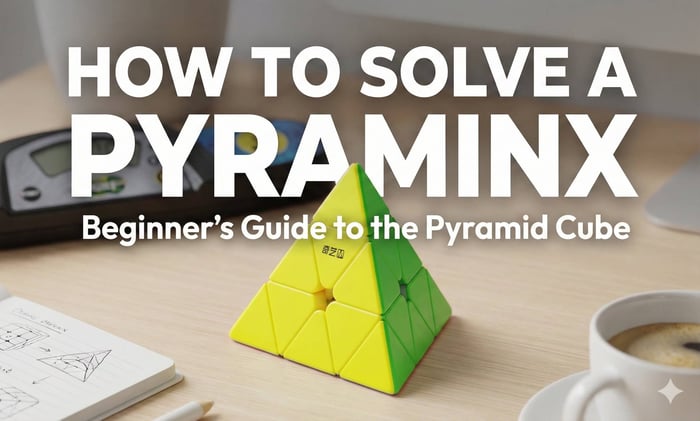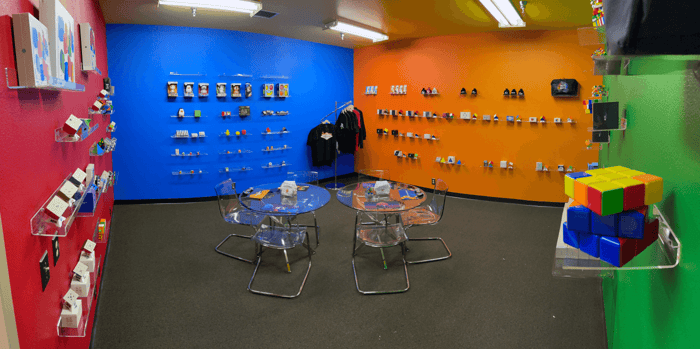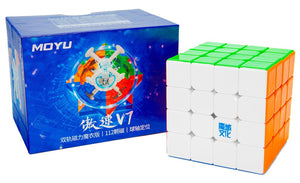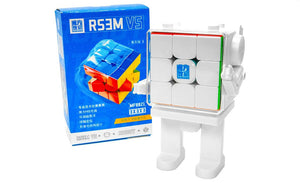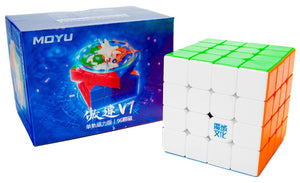The Allure of the Pyramid Cube
The pyramid Rubik’s cube — the Pyraminx — looks totally different from the classic 3x3 cube, but that’s part of what makes it so exciting! Instead of square layers and corner pieces, you’re working with triangular faces, rotating tips, and edge pieces that turn in fluid, snappy ways.
But why do so many cubers fall in love with the Pyraminx cube?
Because it combines fast turning, cool geometry, and speedy solves — sometimes even faster than regular cubes! One of the best parts is how quickly you start improving. You can go from confused to confident extremely fast… and that momentum feels amazing.
The pyramid cube solution is also a great way to build foundational pattern recognition that carries over into other puzzles. Plus, cubing in general is known for boosting brain power.
Understanding the Pyramid Cube’s Design
Before solving, you need to master the terminology. Luckily, Pyraminx terms are super simple:
Tips: The tiny rotating triangular caps on each point.
Centers: The thicker triangle areas beneath each tip.
Edges: The long triangular pieces between centers.
The turning system is also different from typical cubes, large and small, because this puzzle is layer-based and tip-based. You don’t have corner/edge orientation stress like traditional cubes. That makes solving the pyramid cube easier, smoother, and much more intuitive.
Step-by-Step: How To Solve a Pyramid Cube
Here’s your beginner-friendly Pyraminx cube solving method.
Recognizing Common Pyraminx Patterns
Once you’ve solved the pyramid Rubik’s cube a few times, you’ll quickly start spotting patterns.
Some common visual clues include:
Two matching edges already completed on the same face
Centers forming quick color triangles
Edges lining up before tips are even adjusted
Pro tip: When you start spotting these repeating formations, solving the Pyraminx cube becomes instinctive — not just memorized.
Troubleshooting Common Mistakes
You’re going to turn the wrong way occasionally. Every cuber does.
If you get stuck:
Reset just the last 2–3 moves instead of undoing everything.
Re-align your tips — accidentally bumping a tip is a common Pyraminx beginner issue.
Rebuild your first face. That alone fixes most errors instantly.
Don’t force fast moves before you have recognition under control.
Think of mistakes as feedback, not failure.
Taking Your Skills Further
Once you’ve mastered the beginner pyramid cube solution, it's time for speed.
This puzzle is famous for fast solves because it’s super fluid, corner-light, and algorithm-light; you can chase sub-10 solves and see progress quickly.
Ways to level up:
Learn intuitive last-layer recognition patterns.
Experiment with finger tricks.
Try reverse engineering solved states.
Practice one-handed solving.
Explore alternative Pyraminx patterns for creativity and fun.
Cubing can be both technical and playful!
Master the Pyramid Cube and Have Fun with It
Learning how to solve a pyramid cube is an amazing entry point into algorithmic thinking, pattern recognition, and speed-solving confidence. The Pyraminx cube is simple enough for beginners, yet flexible enough for advanced cubers to push incredible times. It’s approachable, fast, and super satisfying.
Keep practicing, enjoy the journey, share your solves, celebrate new personal bests, and stay curious. Most of all, have fun with every twist!



